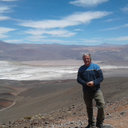Development of an Antioxidant Phytoextract of Lantana grisebachii with Lymphoprotective Activity against In Vitro Arsenic Toxicity.
Açar sözlər
Mücərrəd
Phytochemicals have been presumed to possess prophylactic and curative properties in several pathologies, such as arsenic- (As-) induced immunosuppression. Our aim was to discover a lymphoprotective extract from Lantana grisebachii Stuck. (Verbenaceae) (LG). We assessed its bioactivity and chemical composition using cell-based assays. Fractions produced from a hexane extract acutely induced nitrite formation in T-activated cell cultures (P < 0.0001). Water extraction released a fraction lacking nitrite inducing activity in both lymphocyte types. Aqueous LG was found to be safe in proliferated and proliferating cells. The infusion-derived extract presented better antioxidant capacity in proportion to phenolic amount in lymphocytes (infusive LG-1i at 100 μ g/mL), which protected them against in vitro As-induced lymphotoxicity (P < 0.0001). This infusive LG phytoextract contained 10.23 ± 0.43 mg/g of phenolics, with 58.46% being flavonoids. Among the phenolics, the only predominant compound was 0.723 mg of chlorogenic acid per gram of dry plant, in addition to 10 unknown minor compounds. A fatty acid profile was assessed. It contained one-third of saturated fatty acids, one-third of ω 9, followed by ω 6 (~24%) and ω 3 (~4%), and scarce ω 7. Summing up, L. grisebachii was a source of bioactive and lymphoprotective compounds, which could counteract As-toxicity. This supports its phytomedical use and research in order to reduce As-related dysfunctions.


